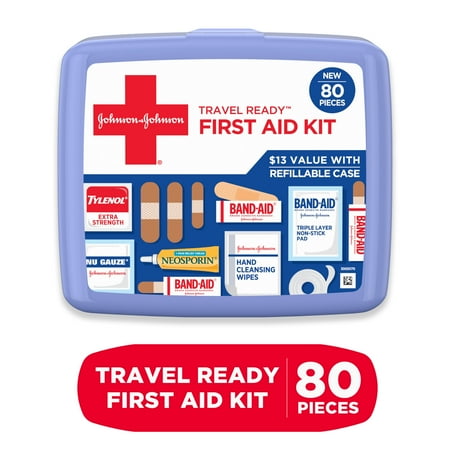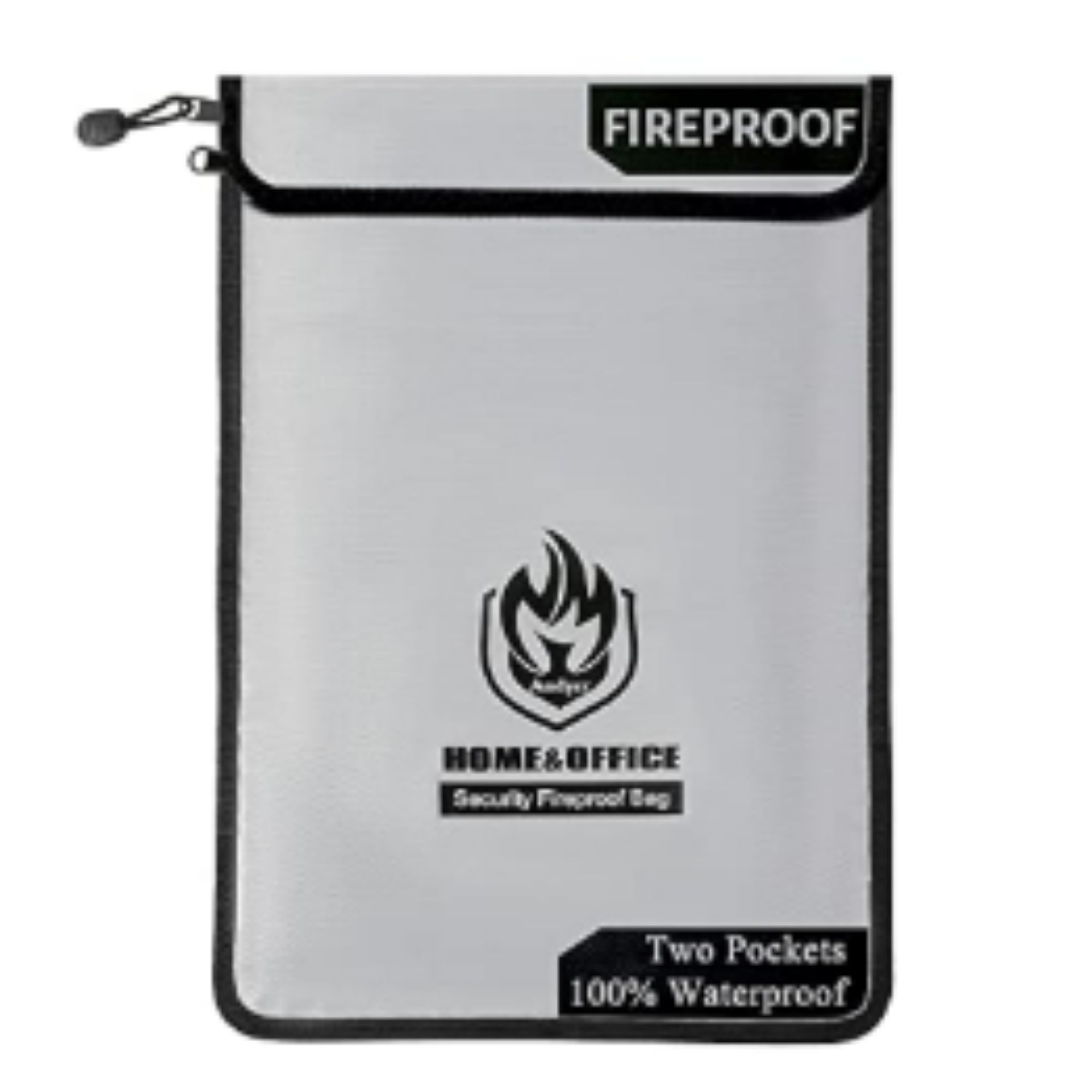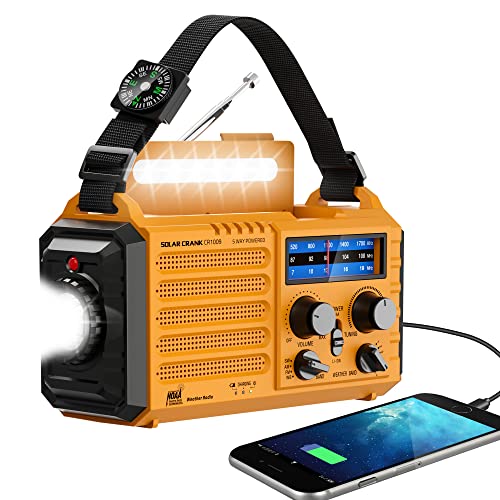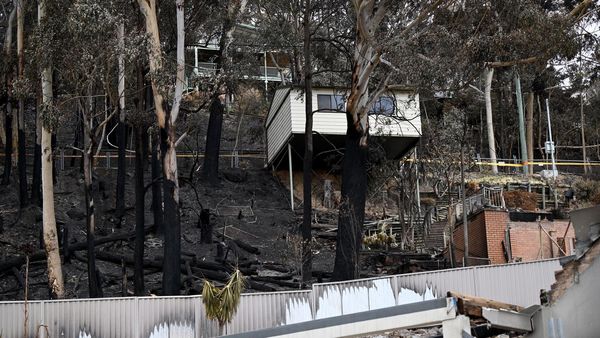
With new studies suggesting that hurricanes are likely to become more frequent in both the Atlantic and eastern Pacific oceans over the next decade, increasing the risk for communities across North and Central America, it is more important than ever to understand how to pack a DIY hurricane preparedness kit.
These essential sets can help to keep you and your family safe and healthy during the worst of the extreme weather.
Here, prepping experts have shared their tips to help you prepare your house for hurricane season with a grab-and-go kit.
Making your own hurricane preparedness kit
A hurricane preparedness kit mirrors a general emergency kit in many ways and is a vital component to getting your home emergency-ready.
It helps to have some of your kit in an easy-to-move bag, such as this 45L military-style backpack, from Amazon, to help you leave a dangerous situation quickly should the need arise.
Sean Gold, emergency management expert and creator of TruePrepper, explains, ‘In the prepping world, we call these bug out bags. Plan where you will evacuate ahead of time, and get there before the storm arrives if models start to look bad.
'Pack for at least a week – it can be hard to get home in the aftermath of a devastating hurricane. Also add important documents, like insurance information, personal effects, and emergency cash.’
With studies showing these are going to be more frequent and stronger than ever, it's vital to be ready to move.
However, Sean adds, ‘When you have all of these items, it’s important to know where you are storing them, but I suggest that you don’t keep them all together unless you are putting them in an evacuation kit.
'If you store everything in one spot, you could lose it all to flooding or a falling tree on your home. I keep my supplies spread out in my home as a redundancy – don’t keep all your eggs in one basket.’

1. An emergency weather radio
One of the best home upgrades to prepare a house for extreme weather is to invest in a quality emergency weather radio, such as the Midland Emergency Crank Weather Alert Radio from Best Buy. It can be charged via a micro-USB, built-in solar panels, or a hand crank to keep it going in extreme situations. It also features a flashlight, SOS strobe light, and a phone/tablet charging point.
Sean explains, ‘An emergency weather radio is a must in a hurricane preparedness kit. These multi-purpose all-stars will keep you informed when you tune into the weather band for updates. Many also double as flashlights and phone chargers too.’
2. Extra food and a stove
As with preparing your home for a thunderstorm, storing shelf-stable food and a backup cooking arrangement in your hurricane preparedness kit can help you stay comfortable and healthy during extreme weather, especially if power goes out.
Diane Delaney, executive director at Private Risk Management Association, says, ‘You will want at least a three-day supply of non-perishable items. Some ideas might include canned tuna, peanut butter, instant oatmeal packets, cans of soup, protein bars, granola bars, applesauce cups, trail mix, etc. Remember, if your cans do not have a pop top, you may need to pack a can opener.
‘Don’t forget infants and pet supplies, too,’ she adds. ‘Formula, bottles, diapers, wipes, your furry pet's food, medications, and a spare leash.’
Sean adds, ‘Having a way to boil water and cook food, if needed, is pretty important when there isn’t power. If you have a propane grill, you can use that as an emergency stove if you have extra LP tanks.’
The Coghlan's Campheat Emergency Folding stove from Walmart is a good option.
Verified shopper Bayley1028 shared, ‘I was recently out of power for eight days, got power back for two, then out another three days due to several storms. These things really work well with the canned fuel and heat up things in a reasonable amount of time.
'I even cooked full meals with them, and I only used about 1 3/4 cans of fuel the entire time I was out of power.’
3. Water storage
Clean water access is one of the most important considerations when packing a hurricane preparedness kit.
Steve Leasure, VP of operations at Rainbow Restoration, advises, ‘Having access to clean water is essential during hurricane emergencies when your regular water supply becomes contaminated or unavailable. FEMA recommends storing at least one gallon of water per person per day for a minimum of three days.
‘You can also purchase large water containers that store up to seven gallons, or a week’s supply for one person.’ The top-rated Reliance Products 7-Gallon Aqua-Trainer from Amazon serves this purpose and has a built-in spigot for easy dispensing.
4. Flashlights and batteries
Flashlights and batteries are essential for any kind of emergency preparedness kit to help prepare a home for a power outage.
Steve continues, ‘Power outages are common during hurricanes, so be sure to have plenty of flashlights – we recommend having at least one flashlight per person – and ensure that you have a supply of spare batteries to keep them charged. Keep your devices powered with backup battery packs.’
This hand-crank lamp, from Walmart, can help to keep things illuminated without backup power supplies, too.
5. Medicine, hygiene essentials, and bug spray
If you need to leave quickly, it pays to have all of your essential pharmaceuticals to hand in your hurricane preparedness kit. Organize medicines so that they are labeled and safe from potential water damage. This heavy-duty waterproof Tuff Box from Walmart can help with this.
Steve adds, ‘Keep a first aid kit on-hand that is well-stocked with supplies like bandages, gauze, sanitary wipes, and ointments to treat any injuries that may occur during a hurricane emergency. Also, add any personal medications to this kit.
‘Keep a stock of personal hygiene items in your kit, such as toilet paper, hand sanitizer, toothbrushes and toothpaste, as well as any other hygiene items like feminine hygiene products and diapers and wipes for infants.’
Sean also recommends packing bug spray. ‘The bugs (especially mosquitoes) get intense after a hurricane,’ he explains. The OFF! FamilyCare mosquito spray from Target is formulated with 15% DEET.
6. Trash bags
These might not be the first thing you think of when prepping for an emergency, but waste management is essential to maintaining good health. Sean says, ‘If your trash starts piling, you’ll want to keep it contained to prevent sanitation issues.’
Heavy-duty trash bags that can be sealed up, such as the Glad ForceFlex trash bags with Clorox from Walmart, are your best bet for this.
7. An evacuation plan
It can be difficult to protect your home from flooding, especially with the unpredictability of a hurricane. Because of this, Sean recommends including a detailed (but easy to digest) evacuation plan in your hurricane preparedness kit.
‘Flash floods can ignore flood maps, storm surge is an issue at the coast. You can protect your home to a degree, but having a plan to evacuate is important.’
This should include plans on how to leave your home, what you are taking with you, and where it is located, and plans for evacuating pets, children, and the elderly.
8. Clothes and sleeping bags
As with preparing your home for a snowstorm, Steve reminds us, ‘Should you lose access to electricity or heating or need to evacuate to a shelter, blankets and/or sleeping bags for warmth and comfort will help to improve the situation.
‘Hurricanes bring extreme rainfall, so pack a change of weather-appropriate clothes for every family member, such as a rain jacket, closed-toed shoes, and extra socks and underwear.’
The Esky emergency sleeping bags, available at Amazon, pack down into tiny hand-held bags and are waterproof, helping to keep you warm and dry in extreme situations without having to lug a whole camping set around.
9. Power generators
Hooking up a generator to your house is a great way to prepare for a hurricane, but it should not be at the top of your hurricane preparedness kit list. Sean shares, "There are plenty of ‘nice to have’ items, including generators, solar/power stations, chainsaws, satellite internet, etc.
‘Once you are generally prepared for a disaster, looking into how you could be more comfortable through one might make sense depending on your geographical risk and financial situation.’
10. Insurance information
Another helpful addition in your hurricane preparedness kit, if you have time, is a copy of the relevant insurance information. It isn’t necessary for supporting life, but it can help in the aftermath of the hurricane.
Gary Miller, agent at Goosehead Insurance, explains, ‘Another important step all homeowners in hurricane-prone areas should do, well before the storm season arrives, is review their home insurance policy as well. Understanding your homeowner's insurance policy before a major storm hits is critical to ensure you have adequate coverage and are protected from severe financial loss.
‘In your policy, you should review wind and hail deductibles, hurricane or named storm deductibles, and most importantly, the necessity of a separate flood insurance policy.
‘Standard homeowners insurance does not cover flood damage, and flood insurance through the National Flood Insurance Program typically has a 30-day waiting period before the policy becomes effective, so do not delay.’
What to shop

This Johnson & Johnson is filled with 80 wound care supplies including bandages, cleansing wipes, antibiotic ointment and sterile dressings.

Keep important medical information, identification, insurance details, and your evacuation plan safe from water and flooding in this waterproof and fireproof document folder.

This emergency hand-crank radio has a built-in flashlight, standing light, and phone charging ports to help keep you connected during extreme weather events.
Meet the experts
With your personal hurricane preparedness kit prepped, consider the ways you can future-proof your home against extreme weather.
This could be as extensive as eco-home improvements, such as generators or solar power, or be as simple as packing tarps and sandbags to help shield your home from damage from floods and debris.







